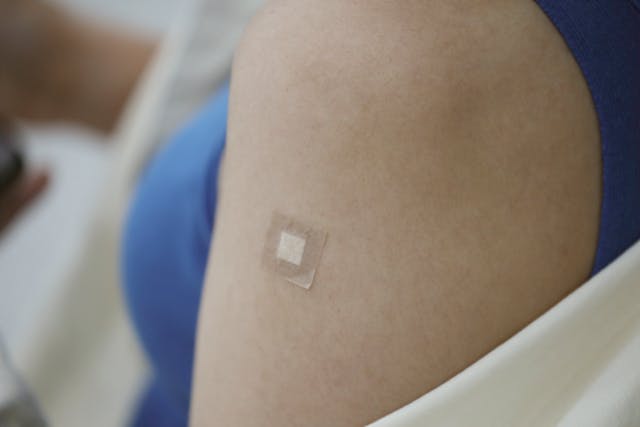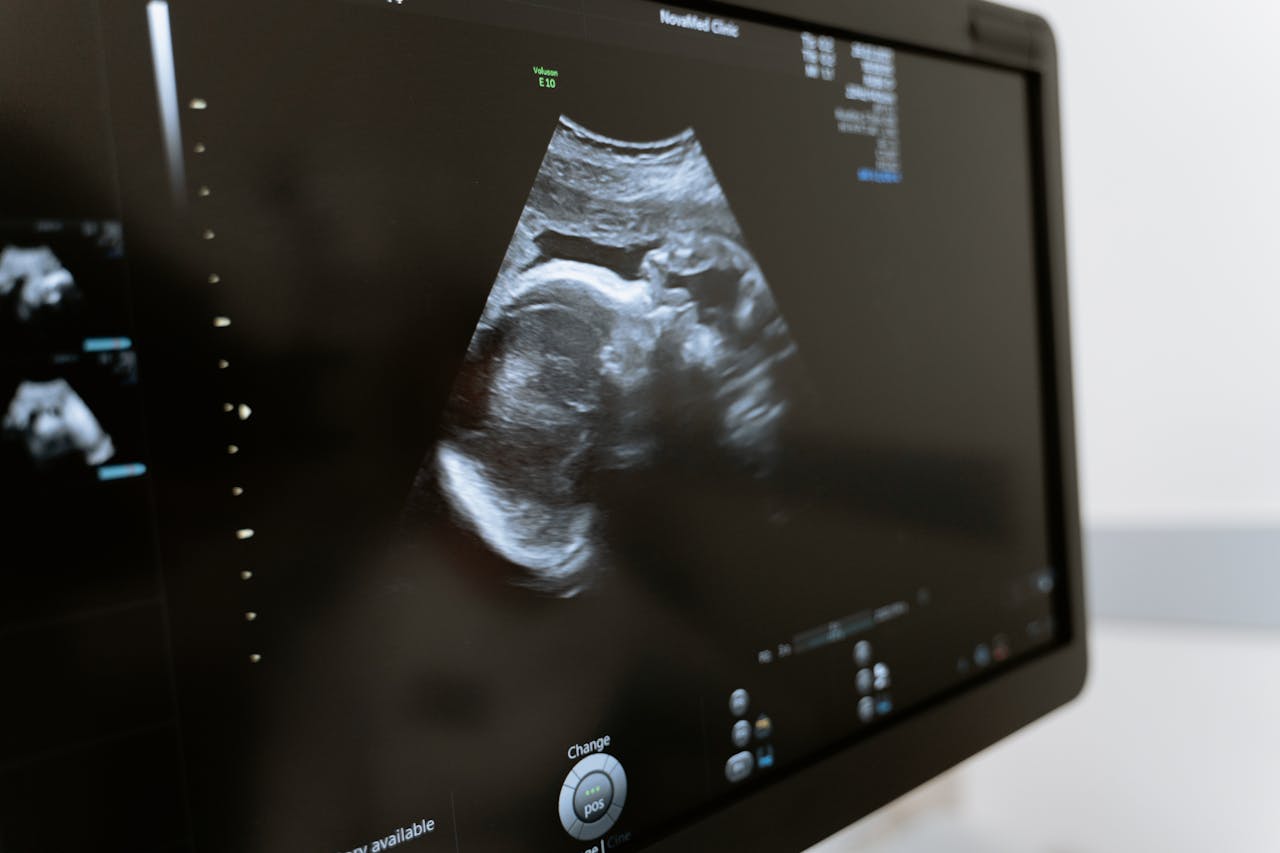What is the lowest dose of progesterone for HRT? A full guide

What is the lowest dose of progesterone for HRT? Click to learn about the big role of progesterone in HRT, recommended dosage, and the risks that might be there.
A hormone replacement therapy (HRT) is a treatment meant to help women replenish their declining hormones to manage the symptoms of perimenopause and menopause. Often, it can be an estrogen-only therapy because estrogen is the key hormone associated with menopausal symptoms. However, the growing body of knowledge suggests that a combined estrogen-progesterone therapy is a good choice to balance the effects of estrogen in your body, reduce the risk of cancer in women with preserved uterus, and help improve insomnia.
Despite the benefits, many women are still concerned about receiving progesterone in HRT, mainly because of old studies that have linked estrogen-progesterone therapies to a higher risk of breast cancer. These women, as well as those who are intolerant to this hormone, often wonder what the lowest dose of progesterone for HRT is. Nevertheless, most specialists say that there is no reason for concern. Old studies explored the effects of synthetic progesterone. Now, however, HRT is usually done with bioidentical progesterone that has not been linked to cancers.
As for the amount of the hormone you should get, the bioidentical progesterone dosage depends on the form of progesterone and regimen of consumption. Most therapies begin with 100 mg/day when taken daily or 200 mg/day when taken 12-14 days a month
Progesterone is one of the two essential hormones in females. It plays a significant role in cycle regulation and reproductive function. During perimenopause and menopause, it drops sharply along with estrogen, and many women receive hormone replacement therapy (HRT) to manage accompanying symptoms. While the biggest part of women (around 10%) receive estrogen-only HRT, the growing body of knowledge suggests that adding progesterone to your therapy can help balance the effects of estrogen and minimize the risk of complications like uterine cancer.
If you are just planning to start HRT or want to integrate progesterone into your current therapy, this article will help you guide your decision. Here, we’ll clarify the details of this therapy, the role of progesterone in it, and the lowest dose of progesterone for HRT.
{{button}}
Understanding HRT
Before we discuss progesterone dosage for menopause, let's look at hormone replacement therapy in general.
So, what is HRT?
HRT is a hormonal treatment meant to help replenish hormones in perimenopausal and menopausal women, whose hormones naturally decline due to aging. There is often some confusion concerning the name of hormone replacement therapy–although its name includes the word “replacement,” HRT actually doesn’t replace any hormones but supplements them.
By supporting optimal hormone levels, HRT helps women manage common symptoms of perimenopause and menopause, such as:
- Hot flashes
- Night sweats
- Urinary tract infections
- Vaginal dryness
- Insomnia
- Brain fog
- Mood swings
HRT treatment can come in multiple forms, including pills, vaginal rings, patches, gels, and topical creams. Depending on the form of consumption, HRT works by releasing hormones into vaginal tissue or bloodstream to replenish your own levels.
Types of HRT
There are two forms of HRT:
- Estrogen-only - This therapy implies supplementing only your estrogen levels. Typically, it’s prescribed to women who have had a hysterectomy (uterus removal). Sometimes, women who have their uterus preserved can also use estrogen-only therapy, but preferably in the form of vaginal estrogen.
- Combined therapy - This treatment is usually prescribed with women who didn’t have their uterus removed. Although most menopausal symptoms are associated with estrogen, meaning that progesterone may not be necessary to manage your condition, progesterone is known for balancing the effects of estrogen. In particular, progesterone helps mitigate the adverse effects of estrogen on the uterus and protects it from cancer. That’s why progesterone is added to HRT in women with a uterus. Nevertheless, women with hysterectomy may also benefit from combined HRT because progesterone has been shown to help with insomnia.
Lowest Dose of Progesterone for HRT: Understanding the Proper Dosing
Finding the right progesterone dosage for menopause is crucial because it helps provide sufficient endometrial protection to prevent cancer. Also, dosage is important to find the right balance of symptoms, depending on your overall health condition and specific menopausal symptoms.
What happens when the progesterone dosage is incorrect? It can result in several opposing symptoms:
- Too much progesterone: breast swelling and tenderness, fluid retention, bloating, fatigue, and mood swings.
- Too little progesterone: anxiety, irritability, insomnia, and breakthrough bleeding.
On the other hand, when you find the perfect dosage that’s perfectly balanced with estrogen, it helps ensure that the uterine lining remains thin and protected. Beyond the uterus, the correct dosage helps improve sleep, stabilize mood, and support proper fluid balance in the body.
The Role of Progesterone Form in Dosage
Progesterone can be added to your HRT treatment in one of the following forms:
- Pill - 100-200 mg
- Hormone Intrauterine Device (IUD) - 20 mcg
- Vaginal progesterone - 100-200 mg
- Patch - generally not recommended due to insufficient protection of the uterus
Typically, pills are the most common form of prescribed progesterone. It’s usually prescribed at the beginning of your HRT therapy as one of the most convenient, simple, and bioavailable options. However, when you have your therapy for some time, you may want to switch the form depending on the specific side effects you experience from different forms of progesterone.
The form of progesterone you take is incredibly important in dosage, mostly because some forms of treatments provide you with progesterone daily, whereas others can be taken during certain days of the month.
Common Regimens
Another factor that must be considered when defining a suitable progesterone dosage for menopause is the regimen of progesterone supplementation.
Generally, there are three regimens:
- Daily (combined therapy) - Taking estrogen and progesterone every day might be a good regimen to develop a sustainable habit and ensure consistent therapy. Also, this regimen reduces the risk of withdrawal bleeding, which often happens when you take progesterone only during specific days. Typically, 100 mg is the recommended dose for this regimen.
- Daily (progesterone-only therapy) - It’s also possible to have HRT with progesterone only, without combining it with estrogen. This approach can be chosen if you can’t or don’t want to supplement estrogen, for example, because of the history of hormone-sensitive cancers. This therapy is effective for addressing vasomotor or mood symptoms during menopause. In this case, progesterone dosage is rather high–200 or 300 mg because such dosing shows the biggest share of improvements. Still, the starting dose is usually set to 100 mg.
- Certain days of the month (combined therapy) - Some women take progesterone with estrogen for only 12 days a month. This is done to mimic your natural menstrual cycle. In this case, the typical dosage is between 100 and 200 mg.
Synthetic vs. Bioidentical Progesterone Dosage
One more thing that matters a lot in deciding on progesterone dosage is the type of progesterone you take.
Bioidentical progesterone has exactly the same structure as the progesterone that’s produced in your body naturally. It’s considered to have fewer side effects and lower risks. That’s why the recommended bioidentical progesterone dosage is usually higher–100-200 mg.
Synthetic progesterone is known as a progestin. It is a chemically modified version of natural progesterone and may have higher risks. The recommended dosage is 20-40 mg in patches or 2.5-10 mg for the oral route.
HRT Dosage Chart Menopause
Now that you know how different aspects, such as progesterone type, form, and regimen, can affect the dosage, let’s quickly sum it all up in a unified progesterone HRT dosage chart menopause:
Bioidentical progesterone:
- Pill - 100 mg/day when taken daily or 200 mg/day when taken 12-14 days a month.
- Vaginal progesterone - 100-200 mg/day.
- Progesterone-only therapy - 200-300 mg/day.
Synthetic progesterone:
- Pill - 2.5-10 mg/day depending on brand, regimen, and individual factors.
- Patch - 20-40 mg/day.
- Hormone Intrauterine Device (IUD) - 20 mcg/day.
What Is the Lowest Dose of Progesterone for HRT?
While HRT is generally considered safe and beneficial, there are still many concerns around this matter and around progesterone dosage, in particular.
Many women who are just planning to start their therapy have plenty of questions about the lowest dose of progesterone for HRT. Most often, this concern stems from outdated study findings, such as the Million Women Study from 2003 that states that use of HRT might be linked to a higher risk of incident and fatal breast cancer, especially when it’s an estrogen-progestagen therapy. Furthermore, this and some subsequent studies claim that it's not estrogen that causes this side effect but progesterone. So naturally, many women have developed a distrust and fear of adding progesterone to their HRT.
Today, however, there are no evident reasons for concern. The thing is that old studies on HRT explored the risks of therapies with synthetic progesterone. Today, many specialists prescribe bioidentical progesterone, which has not been linked to cancer risks.
Another reason that may cause women to be interested in getting the lowest dose of progesterone for HRT is a poor progesterone tolerance. Indeed, women with increased sensitivity to this hormone can experience a range of physical, psychological, and metabolic side effects, such as:
- Bloating
- Irregular bleeding
- Anxiety
- Irritability, etc.
If progesterone intolerance is what bothers you, all you need is to work with your healthcare professional to assess the symptoms and adjust the dosage to your unique needs.
FAQ
What is the lowest dose of progesterone for HRT?
The dosage depends on the form of progesterone you take, as well as on the chosen regimen of therapy. In most cases, 100 mg per day is a good starting point. However, if you are taking progesterone not during the entire month but for 12-14 days, the starting dose is typically increased to 200 mg/day.
Is 200 mg progesterone a high dose?
No, 200 mg of progesterone per day is considered the normal dose, especially if you are taking this hormone for 12-14 days a month. It may also be a normal dose when you consume progesterone daily.
Who should be concerned about their progesterone dosage for menopause?
Generally, there are no reasons for concern about bioidentical progesterone dosage. Natural progesterone is not linked to increased cancer risks or other problems. However, women with progesterone intolerance may experience additional side effects, so it’s always important to receive personalized medical attention and adjust the dosage according to your needs.
Conclusion
Progesterone plays an important role in HRT, counteracting the impact of estrogen on the uterus and helping improve sleep. Still, due to a number of old studies, some women are still concerned about the lowest dose of progesterone for HRT, thinking that taking too much of it can increase the risk of breast cancer.
However, as you now know, taking natural progesterone is generally safe, and starting with 100 or 200 mg per day is okay. Consult with your healthcare provider to find the right dosage for you and get the most benefits from your therapy.
{{pink-banner}}








.avif)
